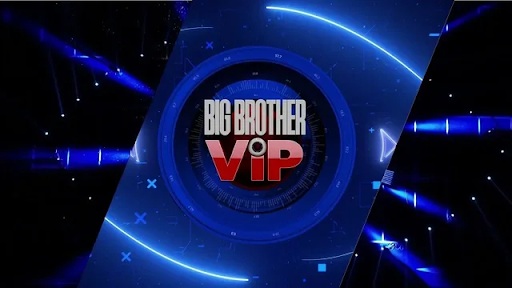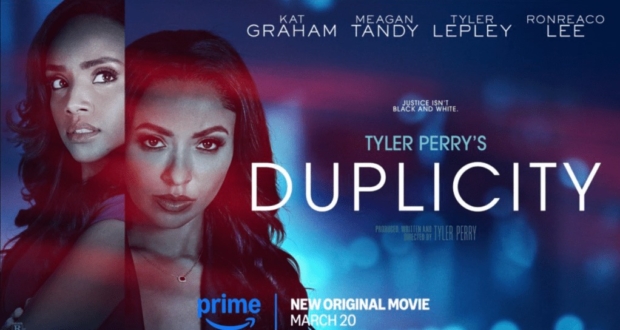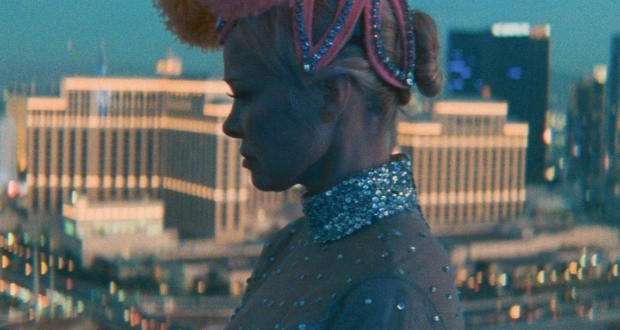The accepted status of movies as a cultural and social institution means that it is seen as no less legitimate to find out more about them, and to study their role in our world, our values and our experiences. As a consequence, academic writing about films is fast becoming a staple of courses in virtually all subjects. The topic of ‘film’ has become a legitimate field of study in academic papers from such diverse disciplines as film studies (where this might be the sole focus), sociology, psychology and cultural studies (where it is only one of many ‘texts’ open to in-depth analysis). There is a distinct way of approaching the task of writing about films in an academic context. Writing about movies in academic papers can be insightful and engaging, and if you need help, you might consider asking to write my paper to ensure your analysis is thorough and well-written. Academized.com offers professional paper writing help, making it a valuable resource for students looking to enhance their movie-related academic essays.
The Basics of Film Analysis
Discussing what you plan to do before you do it always helps, so here’s a breakdown of the main elements of film analysis. Most commonly, when analyzing a film for academic purposes, you’ll be thinking about narrative structure, cinematographic design, editing, sound and performance.
Narrative structure would refer to the way the story is told – the plot, character development and thematic issues, for example. The category of cinematography refers to the visual side of the film – camera angles, lighting and the compositions within the frame, among other things. Editing refers to the way connections between shots are made and how those shots are arranged – this is important in determining pace and emotional impact, among other things. The category of sound design addresses a wide-ranging set of auditory issues, including the dialogue track but also music, sound effects and ambient noise – essentially, everything we hear onscreen that adds to the atmosphere of a film and influences mood. Performance refers to the actors and how they present themselves within the cinematic realm to portray their characters and tell the story.
In writing an academic paper about a film, it can be useful to think about these elements both in their own right and in relation to each other. These two ways of thinking help you see how various details fit together to produce meaning and affect the viewer.
Developing a Thesis Statement
Exploring movies in academic papers can be highly rewarding, and collaborating with skilled college papers writers can help you create a thoughtful and engaging analysis. As with any academic paper, an analysis of a film begins with a well-tuned thesis statement. The moment you formulate your argument or interpretation of the film you are viewing, it should be your primary focus throughout your paper. The argument you are trying to make should be specific, debatable and relevant to your field of study.
For example, instead of saying, ‘Citizen Kane is a great movie,’ you might say, ‘Citizen Kane, with its radical employments of deep-focus cinematography and non-linear narrative structure, revolutionized filmmaking and has had a lasting impact on contemporary cinema.’ The thesis is narrow enough that it can be supported by evidence from the movie and scholarly sources.
As you draft your thesis, ask yourself: What is the theme driving the story? How does the filmmaker communicate this theme? What real or imagined context can give the fictional characters real meaning? Keep these questions in mind as you write, and you’ll be writing analysis that matters.
Conducting Research and Finding Sources
It goes without saying (but I shall say it anyway) that to write an effective academic paper about a film, you have to do more than just opine about your impressions. You have to back up what you’re saying through appeal to scholarly sources. To begin the process of research, start with what you know about a film. Go beyond your own personal impressions; see what critical responses there are and what interviews the filmmakers have given that might shed light on their creative process.
Second, seek out academic articles, books and further scholarly support that mention the film or address its broader context: for example, works in film theory, historical accounts or thematic analyses. Consult your university’s library services in order to locate databases of peer-reviewed articles and other reputable academic sources.
In judging the quality of sources, you should ask if they’re reliable – by which we mean authoritative – are they relevant, and are they fresh (in other words, have they been superseded by newer, superior sources)? For the most part, sources on the same subject that appear in academic journals or books from university presses will be the most reliable. But don’t discount other kinds of sources that might be relevant to your analysis, such as interviews with the filmmaker or documents that help to contextualize the film’s production or reception.
Writing About Technical Aspects of Film
If you are discussing the technical details of film in your paper, it is essential to use technical terminology and to explain how these technical features contribute to the film’s meaning or effect.
| Technical Aspect | Description | Potential Significance |
| Shot Composition | How elements are arranged within the frame | Can create visual balance, emphasize certain elements, or convey relationships between characters |
| Camera Movement | How the camera moves during a shot (e.g., pan, tilt, dolly) | Can create a sense of motion, reveal information, or build tension |
| Lighting | The use of light and shadow in a scene | Can set mood, highlight important elements, or create visual symbolism |
| Editing | How shots are arranged and transitions are used | Can control pacing, create associations between scenes, or manipulate time |
| Sound Design | The use of dialogue, music, and sound effects | Can establish atmosphere, provide information not shown visually, or evoke emotional responses |
| Color Palette | The overall color scheme of the film | Can convey mood, symbolize themes, or distinguish between different time periods or locations |
Analyzing Narrative and Themes
Sure, you need to discuss certain technical elements – but the meat of almost any film-analysis essay is going to be about the story and the themes. If you are writing about the narrative, you might talk about plot structure, character development, dialogue and symbolism. How do these pieces work together to present the film’s message or explore its themes?
When discussing themes, identify recurring concepts or images in the film. These might be expressed visually, through the actions of characters, or through dialogue. Consider how the film’s themes relate to broader social, cultural and/or philosophical issues. A paper on The Matrix could address the themes of reality vs illusion; free will vs determinism; or the relationship between humans and technology.
It is important to have a theme in concrete examples from the screening. Describe certain scenes in detail, using time stamps where appropriate, and justify why you have included them to illustrate your point. Always relate your analysis back to your thesis statement.
Incorporating Film Theory
For instance, you may wish to apply film theory to your analysis; film theory provides frameworks for interpreting movies, based on various fields of academic study such as psychology, sociology and philosophy.
Some common theoretical approaches to film analysis include:
- Auteur Theory: Analysis of a filmmaker’s body of work emphasizes the director as the leading creative force.
- Genre Theory: Looks at how a film adheres to or subverts the conventions of its genre and what this might convey about a film’s meaning or its cultural era.
- Feminist Film Theory: Reading a film with a feminist eye towards issues of gendered representation, the male gaze, as well as issues of gendered power.
- Psychoanalytic Film Theory: Drawing on the thinking of Freud and Lacan, this approach focuses on the unconscious meanings and desires of a work of film.
When you do use film theory in your paper, be sure to define the concepts of that theory and explain how you are applying them to your specific film. Whenever you quote the theoretical texts, explain those quotes, and discuss how they relate to the analysis of your film.
Addressing Cultural and Historical Context
Movies are but one product of their time and culture. Any paper about a film you write for an academic audience will likely need to pay at least some attention to the cultural and historical context of that film. This could mean mentioning, for example:
- The social and political climate at the time the film was made
- The film’s reception by audiences and critics when it was released
- How the film reflects or challenges the values and attitudes of its time
- The film’s influence on subsequent movies or popular culture
For example, writing on the film Gone with the Wind, you might analyze how the film’s representation of the American South and slavery reflects a 1930s view of those things, rather than a Civil War view. Or you might look at how views of the film’s value have changed since its premiere, given changes in views about race and gender in the decades since.
And if your contextualisation (as in, discussion of cultural and historical context) is going to be a source of many of your applicable paragraphs, then you’d better be prepared to back it up. (Some of your paragraphs might well polemical, explaining why you agree or disagree with an opinion, but many, if not most, of them will be backstopped by some kind of quote or paraphrase from a source, especially if your opening question was about a work of historical fiction or a film. That source has to come from somewhere: a historical document, a contemporary review, a scholarly article on film history.
Comparing and Contrasting Films
Sometimes, of course, the assignment might ask you to compare and contrast two or more films, and this can also be an effective way to proceed, especially when you’re working on an essay about how two different directors might approach similar subjects, how film techniques might evolve across time, or how different cultures might approach film.
When comparing films, look for meaningful points of comparison. These might include:
- Thematic similarities or differences
- Stylistic choices (e.g., cinematography, editing, sound design)
- Character development and portrayal
- Narrative structure
- Cultural or historical context
For instance, you could look at the original King Kong (1933) and compare it with the more recent remake (2005) by Peter Jackson, analyzing the way that changing special effects, attitudes to culture and filmmaking conventions have affected how the story is told.
When writing a comparative analysis, you can choose to organize your paper by discussing each film separately before comparing both, or you can choose to address points of comparison one by one and discuss both films in relation to each point. When organizing a comparative analysis either way, your comparison should be balanced, addressing each film comparably and explaining in a clear way the significance of similarities and differences that you see.
Conclusion
It’s not easy to write about movies for academic papers, but it’s worth it. It forces you to think literally about the movie – that is, beneath the surface level of good or bad entertainment and into the layers of meaning, technical merit and cultural weight. There’s an obvious pleasure in developing a good thesis, backing it up with solid research and spinning it out through reflection on film scenes, characters and ideas. Your writing might be dense and difficult, but it can have a pleasing heft. It should add something useful to a growing field of thought about cinema and the ideas it conveys.


















